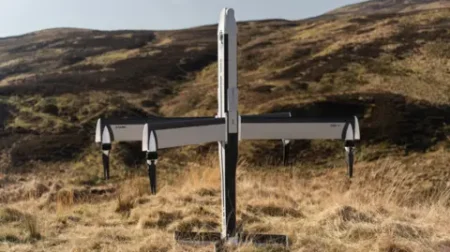In a promising development for train commuters across the United Kingdom, Network Rail, the agency responsible for Britain’s railway infrastructure, has pledged to eliminate mobile phone blackspots on major railway lines and in train tunnels by the year 2028. This initiative is a collaborative effort involving two private telecom firms, aimed at significantly enhancing 4G and 5G connectivity onboard trains and at railway stations.
The announcement has been welcomed by the Department for Transport (DfT), which stated that work on the project is expected to begin in the coming year. This initiative stands to revolutionize the travel experiences of passengers who frequently grapple with dropped calls and unstable internet connections while on their journeys. The project will unfold over three years, as construction activities will take place only during periods when trains are not in operation, ensuring minimal disruption to services.
Initially branded as Project Reach, the first phase involves the installation of an extensive 1,000 kilometers of ultra-fast fiber optic cable along key routes, specifically the East Coast Main Line, which stretches from London King’s Cross to Newcastle, and the West Coast Main Line that runs from the capital to Manchester. Telecommunications firm Neos Networks is also tasked with laying fiber optic cables along the Great Western Main Line, which connects London to Cardiff, as well as the Chiltern Main Line.
Plans for expansion are already in motion, aiming to extend the network to over 5,000 kilometers in the near future, although a definitive timeline for this escalation has not yet been disclosed. Additionally, the company Freshwave has been assigned the responsibility of addressing connectivity blackspots in 57 train tunnels, which accumulate to nearly 50 kilometers of track. This includes significant stretches like the 4-kilometer Chipping Sodbury tunnel near Bristol.
In partnership with major mobile network operators, including BT, O2, and Vodafone, Freshwave will enhance mobile reception in tunnels measuring 250 meters or longer along the East Coast, West Coast, and Great Western lines. Moreover, the consortium will also work to implement new 4G and 5G infrastructure at twelve of the busiest railway stations across the Network Rail portfolio, including key hubs such as Birmingham New Street, Bristol Temple Meads, and Edinburgh Waverley.
The financial aspect of this project has also sparked positive commentary. Network Rail has indicated that the private investment will save taxpayers approximately £300 million, as the two telecommunications companies will finance the necessary upgrades without burdening the existing infrastructure of Network Rail. Jeremy Westlake, the Chief Financial Officer of Network Rail, noted that this investment model is designed to expedite infrastructure upgrades while providing good value for taxpayers. Furthermore, it stands to stimulate broader economic benefits nationwide.
Support for the project has also been vocalized by stakeholders like Bruce Williamson from the advocacy group Rail Future, who emphasized the increasing demand for connectivity, highlighting that many individuals rely on their smartphones for both communication and productivity while traveling on trains. Transport Secretary Heidi Alexander reinforced this sentiment, labeling the rollout a “game-changer” for passengers across the country. She emphasized that enhancing connectivity and mitigating signal blackspots will ensure a more reliable and efficient service as part of the government’s broader objectives related to economic growth and digital innovation.
In summary, the collaborative effort between Network Rail and private telecom companies promises a transformative upgrade to the mobile connectivity landscape for train travelers in the UK. As the rollout of this extensive project unfolds, millions of passengers stand to benefit significantly from improved services, paving the way for a modernized and digitally-connected travel experience.











